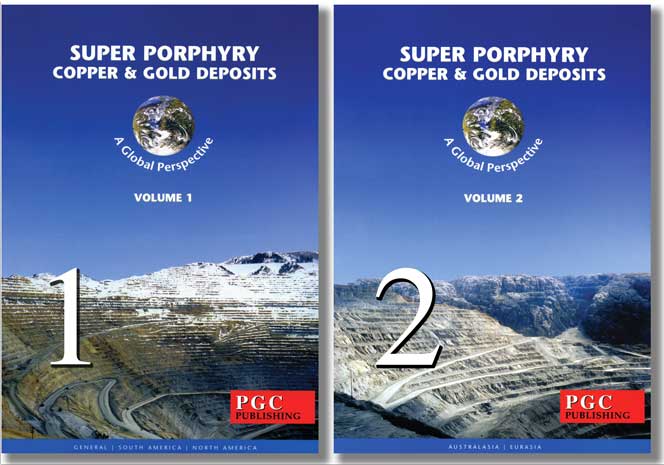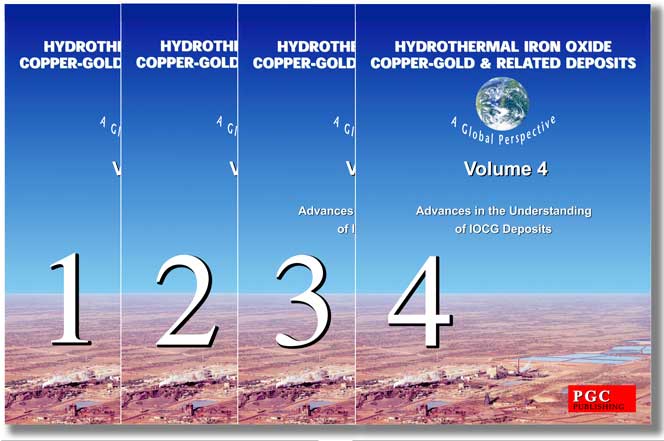|
Nikopol Basin Manganese - Nikopolske, Nikopolskiy, Nikopol, Velykotokmatske, Tokmakskoye, Tokmak |
|
|
Ukraine |
| Main commodities:
Mn
|
|
 |
|
 |
 |
Super Porphyry Cu and Au


|
IOCG Deposits - 70 papers

|
All papers now Open Access.
Available as Full Text for direct download or on request. |
|
 |
The Nikopol Basin in eastern Ukraine contains significant manganese resources which have supported major production of the metal since 1886, and continue to the present. The remaining resources and production are principally from two extensive composite deposits, Nikopolske and Velykotokmatske, which are hosted by Oligocene sedimentary accumulations within the basin. These resources are principally located around the city of Nikopol, which is ~75 km SW of Krivyi Rih, and 260 km WSW of Donetsk (#Location: 47° 39' 59"N, 34° 11' 11"E).
Ukraine is a major producer of manganese, having contributed 4.2% of world output in 2018, while holding some of the globe's largest resources, predominantly contained within the 2.42 Gt @ 23.9% Mn and 1.73 Gt @ 23.4 to 31.0% Mn of the Nikopolske (Nikopolskiy or Nikopol) and Velykotokmatske (Tokmakskoye or Tokmak) composite manganese deposits respectively (Mykhailov, et al., 2022). Although large, they are low grade by world standards and require beneficiation. They are exploited from Lower Oligocene pyrolusite-hydrogoethite-leptochlorite-bearing platformal/coastal-marine sandy-clay sediments of the Nikopol (Nikopolskiy) Basin, and include the exploited Nikopolske (western and eastern parts), and Velykotokmatske (or ) deposits. These deposits occur within an arcuate strip up to 250 km long and as much as 20 km wide on the northern and northeastern edge of the Black Sea Depression, overlying the southern exposed margin of the Ukrainian Shield. The Velykotokmatske Manganese Deposit overlies the Orekhiv-Pavlograd Suture Zone (OSZ) on the NW to SSE trending northeastern margin of the basin, whilst the Nikopolskiy Deposit laps onto the southern Middle Dniprean Domain along the east-west margin of that basin. Other prospects, yet to be fully explored and delineated, lie within this arc and along strike, and are under investigation.
For details of the tectonic and geological setting of the Nikopol Basin, see the Regional Setting section of the Ukraine Critical Minerals record.
NOTE: The Nikopol Basin is part of a vast, originally partially interconnected chain of south European Oligocene basins, which also include the Chiatura and Mangyshlak manganese basins in Georgia and Kazakhstan respectively.
The Nikopol Ore horizon is flat lying to shallow-dipping at <5°S and occurs as a single stratum, varying from several cm to 5 m in thickness, averaging 1.5 to 2.5 m. The manganese mineralisation is interstratified with sand-silt-clay sediments, and ore is found at depths of between 10 and 100 m below surface. Explored resources cover an area of 500 km2. Three types of ores are recognised:
i). Oxides with between 10 and 45%, averaging 28.6% Mn, accounting for 12.2% of reserves. This facies is developed proximal to the palaeo-shoreline and is almost entirely composed of manganese oxides, composed of earthy masses or concretions that may be up >25 cm across, sometimes with relics of carbonate or mixed oxide-carbonate structures. These concretions have a well developed concentric layering, although with deformation, smaller concretions often coalesce to form larger, compound aggregates. The principal oxide ore minerals are pyrolusite, manganite and psilomelane. The top of the oxide ore is marked by iron hydroxides, whilst, in contrast the carbonate facies (see below) is capped by glauconite.
The inclusion of carbonate and oxide-carbonate relics within the oxide facies has been taken to suggest oxide ore was formed as a result of
secondary supergene oxidation of both carbonate and carbonate-oxide ores (e.g., Varentsov and Rakhmanov 1977), whilst oxide ores are in places seen to be corroded and replaced by the carbonate matrix suggesting that the oxide ores formed earlier than the carbonate matrix (e.g., Sasmaz et al., 2022);
ii). Carbonates with an average grade of 20.7% Mn, accounting for 80.6% of reserves, with 3 to 13% CaO and 10 to 50% SiO2. This facies is most distal to the shoreline. Two textural varieties of carbonate ore have been recognised. The first comprises 1 to 25 cm diameter concretionary-nodule of Mn carbonates set in a clay-silt matrix, whilst the second occurs as coarse-lumpy ores that have a highly porous texture. Both calcium rhodochrosite and mangano-calcite are present as ore minerals. Both are always poorly crystalline and very fine-grained. In addition to the carbonate minerals, the nodular variety contains sponge spicules, diatoms and fish bones, while the lumpy variety is relatively free of such inclusions.
iii). Mixed Oxide-Carbonate with an average grade of 25.0% Mn, accounting for 7.2% of reserves. The mixed ores generally comprise ~25% irregular spherical masses of Mn oxide, varying between 0.1 and 1 cm across, set in an Mn carbonate matrix. Corrosion and replacement of the oxides by carbonate matrix suggest that the oxides formed early in the development of the beds, prior to the carbonates.
These three ore types are zoned from top to bottom and from the shoreline down-dip into the basin, from oxides, via mixed to carbonate mineralisation. This transition from oxide to carbonate also corresponds to a gradation from a friable sandstone-clay stratum to concretional manganese carbonate nodules that range from several mm to several tens of cm in diameter.
Gangue minerals include quartz, opal, feldspar, clay, calcite, dolomite, sandstone and calcium phosphate, varying between the oxide and carbonate ores. The oxide ores are quite homogenous, with 26 to 28% Mn; 2 to 3% Fe; 28 to 30% SiO2; 4 to 5% Al2O3; 4 to 5% CaO; 2 to 5% MgO and 0.2% P. In contrast, the average composition of the carbonate ores is much more erratic, with 10 to 30% Mn; 2 to 3% Fe; 11 to 57% SiO2; No Al2O3; 4 to 12% CaO; 1 to 3% MgO and 0.1 to 0.4% P (Kandelaki, 1968, quoted by Strishkov, 1986).
Manganese mineralisation was first recognised in the Nikopol Basin in 1883, with mining commencing at Marhanets, northeast of Nikopol, in 1886. The higher grade, 'easily beneficiated' oxide ores have been intensively exploited, and as a consequence, their reserves had decreased substantially by the last decade (Mykhailov, et al., 2023). The 'harder to beneficiate', oxide-carbonate and carbonate ores were first mined in 1955, although production volumes did not exceed 15%. However, recently this output has increased to 29% as the available oxide ores are now mostly exhausted (Mykhailov, et al., 2023).
Nikopolske along the northern margin of the Nikopol Basin
The composite Nikopolske deposit extends over an a strike length of near 70 km, east-west along the northern margin of the Nikopol Basin. Patchy remnants are found over a further 30 km to the west to Ingulets at Kryvyi Rih. The main Nikopolske deposit is divided into an Eastern and a Western part by a ~10 km wide eroded gap, and into a number of separate 'sectors' for the purpose of mining, separated in some cases by intervals in which the ore horizon has been eroded or thinned. Each of these sectors is exploited by one or more open pits using draglines to remove the 10 to 100 m of soft overburden, although minor underground mining operations are reported from the Marganets sector in the eastern part of the deposit. On either side of the eroded gap between the Eastern and Western parts, there is (or was) a substantial block of oxide ore, grading along strike and down dip into mixed and then carbonate ore. Carbonate ores dominate the remaining resources of the deposit in both the Western and Eastern parts.
The principal ore minerals are oxyhydrokurnakite (a product of the oxidation of manganese carbonates), psilomelane, cryptomelane, vernadite, pyrolusite, manganite, manganocalcite and calcium rhodochrosite.
In the eastern part of the Nikopolske deposit, the Oligocene manganese-bearing ore layer is divided into three units, separated by layers of nontronite. The lower unit is up to 1.6 m thick and has a modest grade due to a sparser density of manganiferous nodules. The middle unit, has oxide and oxide-carbonate ores; whilst the upper has oxide, oxide-carbonate and carbonate ores. The combined layer, as a whole, dips gently to the south, and is up to 3 m thick. From north to south, the ores progress from oxide to oxide-carbonate and carbonate varieties, and the ore minerals comprise cryptomelane, hydrocryptomelane, manganite, pyrolusite, todorokite, manganocalcite, rhodochrosite, dolomite and manganosiderite.
Velykotokmatske (Tokmak or Tokmakskoye) on the northeastern margin of the Nikopol Basin
The composite Velykotokmatske deposit extends over an a strike length of near 60 km, curving from NW to SSE along the eastern margin of the Nikopol Basin. Oxide ores occur as a 10 km long strip that is several km wide on the northern extremity, with the remainder of the resource being dominantly carbonate mineralisation. The Velykotokmatske ore layer is as much as 3 m thick in the central part of the deposit, and comprises a sequence of sand-siltstone-clay containing up to 50% ore minerals. From north to south the oxide ore strip grades into a mixed oxide-carbonate facies, and then into carbonate that constitutes the remaining 87% of the resource. The mined ore variously occurs as nodules, angular lumps, rounded concentric-layered accumulations, and massive layers (Mykhailov, et al., 2023). In more detail,
• the oxide ore is composed of manganese oxides and hydroxides, occurring as slab-like bands, pisolites, larger concretions and as massive, sandy and earthy textures (Mykhailov, et al., 2023).
• the oxide-carbonate ores are variable, including ~20 cm thick layers of carbonate nodules; alternating with 10 to 15 cm thick bands of carbonate ore with manganite pisolites inclusions; clays carrying lumps of manganese-carbonate ores; carbonate ore blocks; clumps of manganese hydroxides; oxide lump-earth ore with rare oxide nodules; lump ore with concentric-layered manganite pisolites and oolites; and manganese carbonate nodules (Mykhailov, et al., 2023).
• the carbonate ores occur as lump and massive varieties with occasional concentrically layered carbonate nodules. The ore is almost entirely composed of minerals of the manganocalcite – calcium rhodochrosite isomorphic series (Mykhailov, et al., 2023).
Within the resource quoted above, reserves are estimated at 1.5782 Gt, with an average 31% Mn in oxide ores, 27.2% Mn in oxide-carbonate and 23.4% Mn in carbonate ores (Mykhailov, et al., 2023).
The most recent source geological information used to prepare this decription was dated: 2023.
This description is a summary from published sources, the chief of which are listed below.
© Copyright Porter GeoConsultancy Pty Ltd. Unauthorised copying, reproduction, storage or dissemination prohibited.
Nikopolske - West Part
|
|
|
|
Porter GeoConsultancy Pty Ltd (PorterGeo) provides access to this database at no charge. It is largely based on scientific papers and reports in the public domain, and was current when the sources consulted were published. While PorterGeo endeavour to ensure the information was accurate at the time of compilation and subsequent updating, PorterGeo, its employees and servants: i). do not warrant, or make any representation regarding the use, or results of the use of the information contained herein as to its correctness, accuracy, currency, or otherwise; and ii). expressly disclaim all liability or responsibility to any person using the information or conclusions contained herein.
|
Top | Search Again | PGC Home | Terms & Conditions
|
|